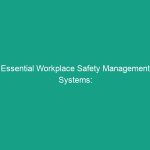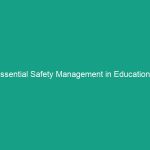Introduction
Good morning team,
Today, we’re going to talk about an important topic that affects all of us in the workplace: Essential Cutting Tool Safety (Beyond Knives): Saws You Must Know. Whether you work in construction, carpentry, or any Environment where cutting tools are used, understanding how to safely operate saws can prevent accidents and keep everyone safe.
Let’s dive into why this topic is crucial for our daily operations and how we can ensure a safer working environment together.
Understanding Essential Cutting Tool Safety
When we refer to Essential Cutting Tool Safety, we’re focusing on the protocols and Precautions necessary for using various cutting tools, especially saws. This is critical because improper use of these tools can lead to serious injuries, including cuts, lacerations, and even amputations. As employees, it is our responsibility to ensure not only our safety but also the safety of our colleagues.
Many people might think that safety only applies to knives or hand tools, but saws can be equally dangerous if not handled correctly. Misconceptions about the safety of power tools can lead to complacency, which we need to avoid at all costs.
Key Hazards, Risks, and Safety Considerations
Let’s look at some of the specific Hazards associated with saws:
- Blade Contact: The most obvious risk is direct contact with the blade, which can result in severe injuries.
- Kickback: This occurs when the saw blade catches on the material being cut and can cause the saw to be thrown back towards the operator.
- Noise and Vibration: Prolonged exposure to noise can lead to hearing loss, while vibration can cause discomfort and conditions like Hand-Arm Vibration Syndrome (HAVS).
- Improper Guards: Many saws come with safety guards designed to protect users. If these are removed or malfunctioning, the risk of injury increases significantly.
Ignoring these hazards could lead to real-world consequences, including serious injuries that may not only affect the injured employee but also the operational efficiency of the entire team.
Best Practices, Procedures, & Actionable Advice
Now that we understand the risks, let’s discuss Best Practices and Procedures that everyone must follow when using saws:
1. Personal Protective Equipment (PPE)
- Always wear appropriate PPE, including Safety Glasses, gloves, and hearing protection.
- Ensure that your clothing fits properly to avoid getting caught in the saw.
2. Inspect Your Tools
Before starting work, always inspect your saw for:
- Worn or damaged blades
- Functional safety guards
- Loose parts or electrical issues
If anything appears off, report it and do not use the tool until it has been repaired or replaced.
3. Safe Operating Procedures
Follow these operating procedures:
- Ensure your workspace is clear of obstructions and distractions.
- Always use the saw according to the manufacturer’s instructions.
- Keep hands at a safe distance from the cutting area.
- Use push sticks or guides to keep hands away from the blade.
- Never reach over the saw blade, especially when it is running.
In a recent incident, an employee didn’t use a push stick and ended up with a serious injury when their hand slipped. This serves as a stark reminder of the importance of following safety procedures.
4. Proper Maintenance
Regular maintenance of your saws is essential. This includes:
- Cleaning the saw after use to prevent build-up of debris.
- Sharpening blades regularly to ensure efficient cutting and reduce strain on the tool.
- Storing saws properly when not in use to prevent damage.
Regulations, Standards, and Compliance
It’s essential to adhere to Regulations set by organizations such as OSHA (Occupational Safety and Health Administration) and any company-specific safety Standards.
Compliance with these regulations is critical for several reasons:
- It protects employees from injuries and health hazards.
- It reduces the risk of legal issues and financial liabilities for the company.
- It fosters a culture of safety within the workplace.
Employee Engagement & Discussion
Let’s take a moment to discuss this further. I’d like to hear from you:
- What safety challenges have you encountered related to using saws?
- Are there any additional safety tips you think we should consider?
Your input is invaluable in creating a safer work environment for everyone.
Conclusion & Key Takeaways
In summary, understanding Essential Cutting Tool Safety (Beyond Knives): Saws You Must Know is vital for preventing accidents and ensuring a safe working environment. Remember to:
- Always wear appropriate PPE.
- Inspect your tools before use.
- Follow safe operating procedures diligently.
- Maintain and store your tools properly.
- Stay informed about regulations and compliance standards.
Let’s prioritize safety in our daily operations and support each other in creating a secure workplace. Thank you all for your attention and commitment to keeping our environment safe.


